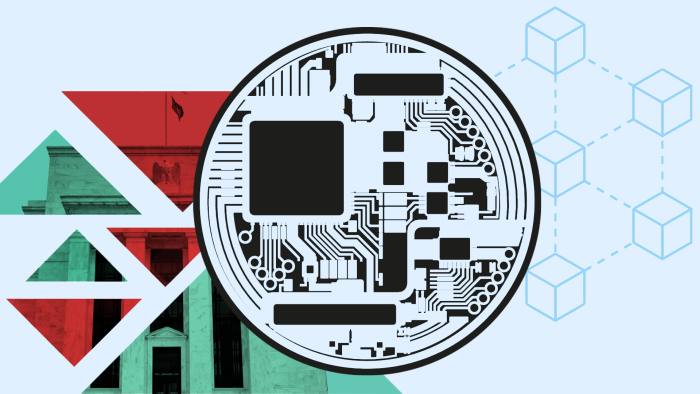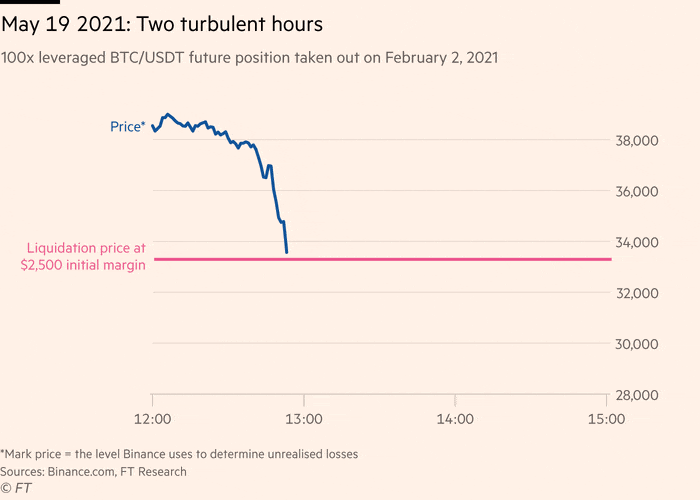How FTX plans to reshape the US futures market with crypto technology

FTX seeks to shake up the vast US derivatives market, marking the largest intervention to date from a crypto group at the heart of traditional finance.
The three-year-old exchange, founded by Sam Bankman-Fried, is seeking approval from the US Commodity Futures Trading Commission to offer customers bitcoin futures – contracts that allow users to bet on the price of the world’s most actively traded digital token.
The proposed process will remove the brokers who for the past 40 years have acted as intermediaries between clients and the stock exchanges where agreements are made. America accounts for a large part of the global futures market where 29 billion contracts were traded last year, which means that if FTX’s plans are approved, the effects could be extensive.
Instead of brokers asking customers to raise extra money, known as margin, when trading goes bad, the exchange will automatically monitor the market, 24 hours a day, seven days a week, and charge client balances accordingly.
This paraphrases the mechanics of futures trading, and if it holds, it could also apply to anyone trading in futures markets, from farmers who lock in corn prices to hedge funds that bet on oil prices.
Automatic liquidations vs margin calls
At the heart of both the existing system and FTX’s proposals is influence. Futures traders usually invest only a small fraction of the total value of their position, which magnifies potential gains and losses. The chips that market participants put on the table are known as “margin”. Margin is critical in leveraged trading because it ensures that if a bet gets sour, the participant on the other side of the trade can become whole.
Cryptofinancing

Critical intelligence about the digital asset industry. Explore FT’s coverage here.
A key difference between the system that is in place now and the FTX proposal is the approach to margin. Under the current framework, when a bet falls too deep under water, a broker will ask a trader to raise additional funds to support the trade, known as a “margin call”, within a certain time limit. If the trader meets the margin call, the trade remains open, otherwise the broker will begin to liquidate its positions and take back the margin that was used to make the trade.
On crypto exchanges such as FTX and Binance – global platforms that are largely unregulated – margin requirements for products such as bitcoin futures are continuously updated. Traders trade directly with the stock exchange instead of through a broker.
Crypto platforms automatically start settling positions if a user’s margin falls below a predetermined level. Usually, a user will receive a notification if their account is at risk – but given the volatility of digital assets, this type of forced liquidation event can cause traders to be wiped out extremely quickly.
Unlike crypto, which trades non-stop, most traditional futures close like the ones that track commodities on the weekend. However, since most people trade efficiently all the time during business days, some smaller market participants have said that they worry about being wiped out in their free time under the FTX proposal. A margin call, on the other hand, provides some respite to meet financing requirements.

Case study: May 2021 crypto ‘flash crash’
Automatic liquidations are already in widespread use in the crypto industry, where trading in bitcoin futures for $ 1.3 billion took place last month alone. Traders can be wiped out extremely quickly in times of market turmoil, with more influence increasing the speed at which a user is forcibly liquidated.
The case study below is based on a “flash crash” about a year ago that failed many mortgaged bitcoin traders. The trader in this illustration has taken out a 100 times mortgaged position on Binance by putting down $ 2,500 on a trade worth $ 250,000. As the market begins to fall, they need to kick in more and more money to avoid being liquidated despite for prices to rise rapidly.
The short downturn, which took place in May 2021, led to huge losses for many retailers. However, due to automatic liquidations, market participants can usually only lose as much as they bet on the trade as opposed to accruing a debt.

The debates
The FTX plan has started a fierce debate in the US since the CFTC opened a consultation in March.
Those who support the FTX proposal believe that it is the next development of the market, as the technology will inevitably continue in markets as it has done for the rest of society. It promotes competition, democratizes futures trading and just as importantly protects smaller investors from accumulating debt they can not afford, which has sometimes led to tragic consequences, spokesmen say.
On the other side of the debate are those who say that the traditional system provides an important “respite” for important decisions that can be made and time to find extra money. A farmer, for example, does not have to worry about sudden market movements that wind up positions he had opened to hedge against fluctuations in commodity prices. Customers do not have to put up more money than necessary, just to give them security. The intermediaries at the heart of the system, the stock exchanges and brokers, would be able to use human judgment to even out potential problems in times of volatility.
The CFTC examines each step in the chain to understand how it will work and the consequences, so it takes its time. A decision may not come this year. It is possible it will allow both models. But when investors explore bitcoin futures, they may encounter several suggestions.

Click here to go to the Digital Assets dashboard

























